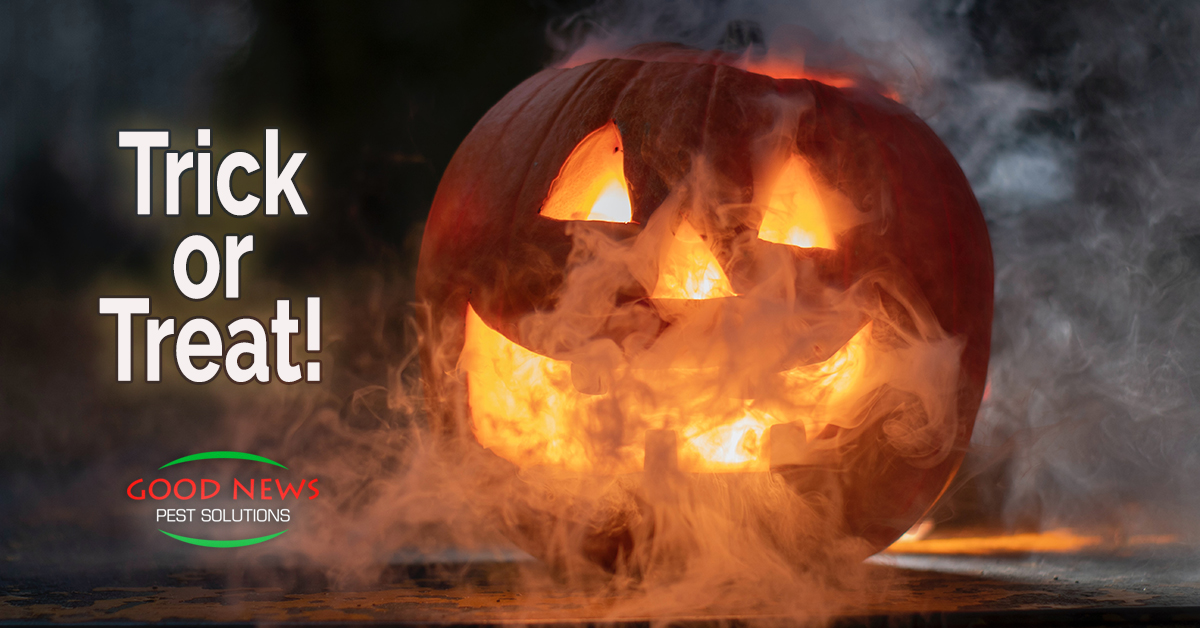
Trick or Treat!
Mischief makers rejoice! Spooky season is upon us. In just a few days, we will recognize Halloween, All Saint’s Day, and Dia de los Muertos, marking the beginning of the autumn and then winter holidays.
Though many point to the ancient roots of the harvest and spirit filled celebrations from our European ancestors, the ways we celebrate Halloween in America are a mish-mash of traditions, rituals, ideas and religious celebrations, both pagan and Christian.
Celts and Romans
The first harvest festival we can point to would be the Celtic celebration of Samhain. Thousands of years ago, the Celts, primarily those in what would become the United Kingdom and France, celebrated their new year on November 1. The day marked the end of the harvest and the last hurrah before the coming, often bitter, winter. The Celts and their religious leaders, the Druids, believed on the day before the new year the veil between our world and the land of the dead was thinnest, allowing ghosts or spirits of the dead to return.
They lit giant bonfires, sacrificed animals and crops, dressed up in animal skins and headdresses, and tried to listen to the spirits and tell each other’s fortunes.
Not long after Jesus’ death and resurrection, the Roman Empire that dominated Israel spread to conquer Europe. The Romans took their festival of Feralia in late October that honored the passing of the dead, and Pomona, the goddess of apples and trees to their new territories. Over time and Roman insistence, those festivals became intertwined with Samhain.
Roman Catholics and Protestant Reformations
Around the 4th century, the Roman Empire was declared officially Christian by Constantine. In 609 AD, Pope Boniface IV decreed the Catholic feast of All Martyr’s Day. By the end of the first century, All Martyr’s Day had become All Saint’s Day (November 1), followed by All Soul’s Day (November 2). In Europe, the days were celebrated with bonfires and dressing up in costumes as angels, saints or even devils. In middle English, All Saint’s Day translated as Alholowmesse.
In 1517, Martin Luther would nail his 95 Theses (or propositions for logical debate) to a church door in Germany, launching the Protestant Reformation, which would eventually send many religious refugees to the New World of America. Seeing themselves as more holy and set apart, they shunned celebrations of Halloween.
But about that same time, a plot to unseat the Protestant King in England was enacted by rogue Catholics in the government, led by Guy Fawkes. When his Gunpowder Plot was defeated, November 5th became a day of celebrations and burning bonfires.
You may be starting to see a trend here.
Tricks or Treats
As part of the celebration of Guy Fawkes Day, children on both sides of the Atlantic Ocean would drag wagons around the neighborhood, begging a “penny for Guy” and chanting, “remember, remember, the Fifth of November.”
Somehow, over the years, despite folks in what became our United States discarding the Guy Fawkes celebration, some elements remained.
In the mid 1800’s, thousands of Irish left their homeland as a result of The Great Hunger, the Irish Potato Famine. Those refugees flooding into America brought with them their traditions and superstitions, including the story of Stingy Jack, who, unable to go to heaven or hell, roamed the earth with a hollowed-out turnip and a lump of hot coal as a lantern.
Turnips were replaced with pumpkins and Stingy Jack morphed into the Jack-o-Lantern.
In the late 1800s there was a push to move away from the scary and macabre surrounding Halloween and make it more community-oriented. By the 1920s this evolved into parties, parades and, yes, Trick or Treating. The practice was promoted across the US as a way to keep kids safe and out of trouble – and reduce vandalism – by keeping everyone in the neighborhood.
Teal Pumpkin Project
What once started as a way to honor or fear religious holidays and rituals, has now developed into a largely secular holiday. While many churches still celebrate All Saints Day in some fashion, Halloween is a fun day of dress up and special treats, community gatherings and consumerism. It’s estimated that Americans spend some $6 billion every year for Halloween, second only to Christmas.
One recent change in how the holiday is celebrated is the Teal Pumpkin Project. Launched in 2012, the project aims to make the holiday even safer – especially for the one in 13 kids who suffer from food allergies or other medical conditions.
Buy a pumpkin (real or a reusable plastic one), paint it teal and place it on your front porch. The color lets everyone in your neighborhood know that you are passing out non-food treats for Halloween.
Some ideas for non-food treats include glow sticks, temporary tattoos, pencils or fun-shaped erasers, stickers, bracelets, bookmarks, necklaces, bouncy balls and spider rings.
You can even go to the Food Allergy Research and Education website and add your home to their interactive Teal Pumpkin map. This way all kids can Trick or Treat, have fun, and stay safe.
Another way to keep your whole family safe is to invest in the greenest pest control solutions out there. With winter coming and even our Florida temperatures eventually dropping, now is the perfect time to start our Go Green Perimeter Plus program and get rid of the most common creepy crawlies who like to share your home. For more details, just give us a call!
« Back to Blog
Proudly Serving
Sun City Center, Ruskin, Palmetto, Parrish, Ellenton, Bradenton, Anna Maria, Holmes Beach, Bradenton Beach, Longboat Key, Lakewood Ranch, University Park, Myakka City, Sarasota, Siesta Key, Osprey, Nokomis, Casey Key, Venice, Englewood, North Port, Port Charlotte, Punta Gorda, Arcadia
Things You Can Do
Pay Your Bill Online
Leave Us a Review
Request a Free* Termite Inspection
Stop Mosquito Bites
Get Rid of Rodents
Get a Termite Damage Warranty
Get Pest Control for Your Attic
Get Pest Control for Your Business Request Prayer
Corporate Address
1080 Enterprise Court, Ste A
North Venice, FL 34275
Call Now: (941) 412-9610
Text: (941) 412-9610
Fax: (941) 412-0080
